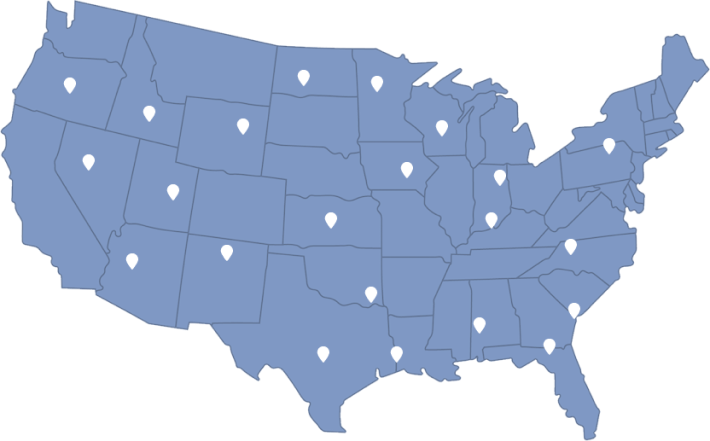Nationwide Nursing Home & Abuse Lawyers
Dedicated legal advocates protecting your loved ones nationwide. When nursing homes break their promise of care, our experienced attorneys fight for the justice your family deserves.

Understaffing isn’t just a logistical issue—it’s the root cause behind many of the worst outcomes in long-term care. When there aren’t enough nurses or aides to go around, residents are left waiting for medication, meals, wound care, toileting, or help out of bed. Delays become infections. Missed signs become emergencies. And preventable harm becomes routine.
At The Higgins Firm, we work with families across the country to investigate how short staffing has contributed to serious injuries or death. We don’t just expose negligence—we trace it back to the systemic decisions that allowed it to happen.
Understaffing occurs when a facility fails to employ or schedule enough trained personnel to meet the medical and daily care needs of its residents. This includes:
Facilities often operate with bare minimum coverage—particularly on nights, weekends, and holidays—leaving residents exposed to serious risks. These decisions are frequently driven by cost-saving measures, especially in for-profit or corporate-owned facilities.
The effects of understaffing are visible in nearly every type of nursing home injury and illness we handle:
| Resulting Harm | How Understaffing Contributes |
| Pressure ulcers | Immobile residents aren’t repositioned every 2 hours |
| Falls and fractures | Residents try to get up without help when no one responds to call buttons |
| Missed medications | One nurse covering dozens of residents can’t maintain correct schedules |
| Malnutrition/dehydration | No staff available to feed or assist at meals |
| Infections | Hygiene, catheter care, and wound cleaning are rushed or skipped |
| Emotional distress | Isolation and neglect erode mental and emotional well-being |
| Delayed hospitalization | Staff miss or dismiss early signs of infection, stroke, or cardiac events |
In many of our cases, families reported noticing signs—residents sitting in soiled clothing, call lights unanswered for 30+ minutes, or rushed staff who simply didn’t have time to explain or update. These aren’t isolated mistakes. They are structural failures.
Families may not be told directly that a facility is understaffed—but they often observe:
If these red flags are present, your loved one’s safety may be in jeopardy.
Understaffing is often the result of intentional business decisions, not bad luck or short-term absences. Facilities—especially those owned by large corporations or private equity firms—frequently:
In these cases, management is responsible—not just for failing to hire, but for putting residents in harm’s way.
The Nursing Home Reform Act of 1987 requires facilities that receive Medicare/Medicaid funds to provide:
“Sufficient nursing staff to attain or maintain the highest practicable physical, mental, and psychosocial well-being of each resident.”
However, federal law currently does not require specific minimum staffing ratios, which means enforcement often comes down to:
As of 2024, CMS has proposed new federal staffing mandates, but compliance remains uneven—and many facilities continue to operate dangerously short-handed, especially in rural or for-profit homes.
At The Higgins Firm, we conduct in-depth investigations to connect staffing failures to preventable harm. Our legal team will:
We don’t stop at the surface—we go deeper to expose the policies and patterns that put your loved one at risk.
If understaffing contributed to your loved one’s injury, hospitalization, or death, your family may be eligible to pursue compensation for:
Every case we handle is built to reflect the true impact on the resident’s life—and your family’s loss.
If you suspect your loved one’s care was compromised because there simply weren’t enough staff on hand, don’t wait. Understaffing is one of the most common—and most preventable—forms of nursing home neglect. We’re here to help you take the next step.
Dedicated legal advocates protecting your loved ones nationwide. When nursing homes break their promise of care, our experienced attorneys fight for the justice your family deserves.
